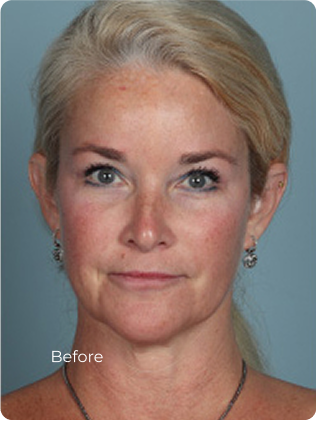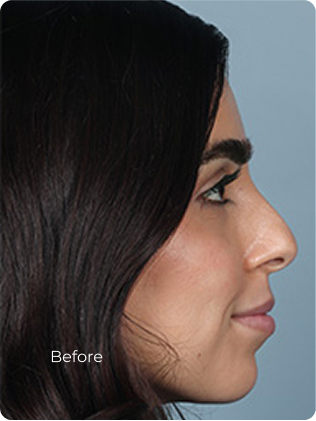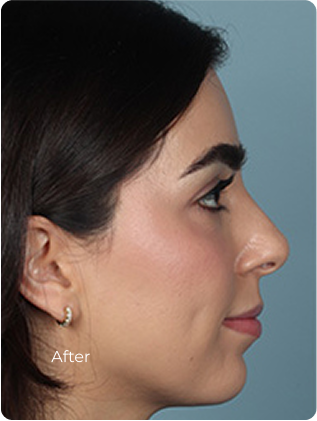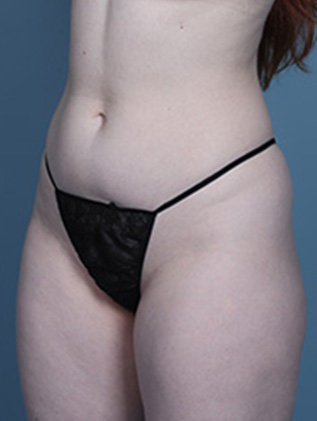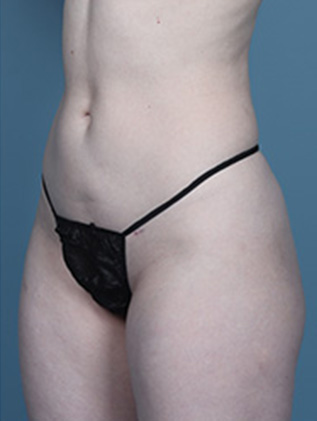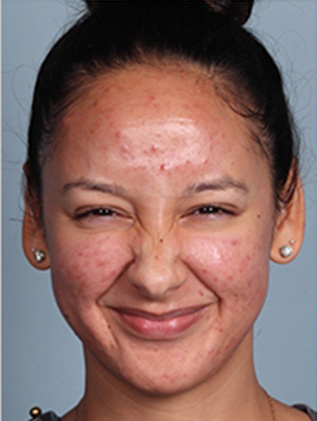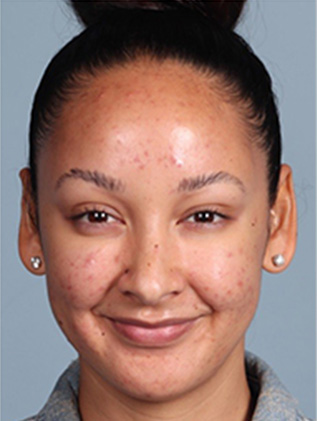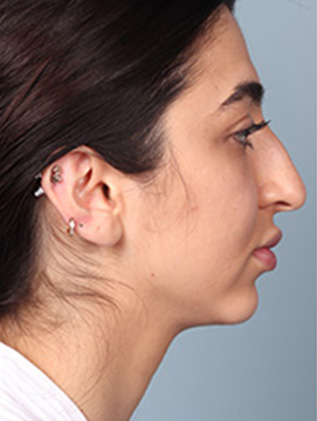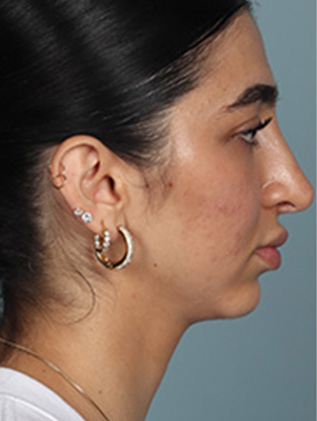Beyond the eyes and nose, the lips are one of the most captivating features of the human face. A beautifully shaped lip exudes harmony and balance, complementing the face’s natural contours. According to physiognomy, ideal lips are plump, pink, and slightly upturned at the corners, creating a fresh and inviting smile. Full, youthful lips are universally associated with attractiveness and vitality. A lip lift can help achieve these ideal features, enhancing the overall appearance and balance of the face.
In recent years, the rise of social media influencers has popularized lip enhancements, with lip fillers becoming a common cosmetic procedure. This trend has contributed to a booming industry that appeals to increasingly younger demographics. Lips have become the focal point of facial aesthetics, and various procedures are now available to enhance their appearance. Among these options, the lip lift stands out as a surgical technique offering more than temporary volume. It reshapes and redefines the lips creating a more youthful and defined lip shape and an improved side profile.
What is a Lip Lift?
A lip lift is a surgical procedure designed to enhance the appearance of the lips by shortening the space between the nose and the upper lip, known as the philtrum. This technique involves removing a small strip of skin from the base of the nose, lifting the upper lip, and suturing it in a higher position. This type of lip lift is also known as the bullhorn lift named after the shape of the incision. The result is an increase in the visible red or pink portion of the upper lip, creating a fuller, more youthful appearance. Additionally, the procedure can improve the overall balance and proportion of the face by elevating the upper lip to a more aesthetically pleasing position.
A corner lip lift, also known as a commissure lift, targets the outer corners of the mouth. This procedure involves small incisions at the corners of the lips to lift them, which helps to correct a downward-turned mouth and gives a more cheerful and youthful expression.
Medically, the lip lift is often performed under local anesthesia with minimal sedation. The incision is typically made just below the nostrils, following the natural contours to minimize visible scarring. This recovery from a lip lift is relatively quick, with most patients experiencing mild swelling and bruising for about one to two weeks. The sutures are usually removed within a week post-surgery, and full results can be appreciated within a few months as the tissues settle.
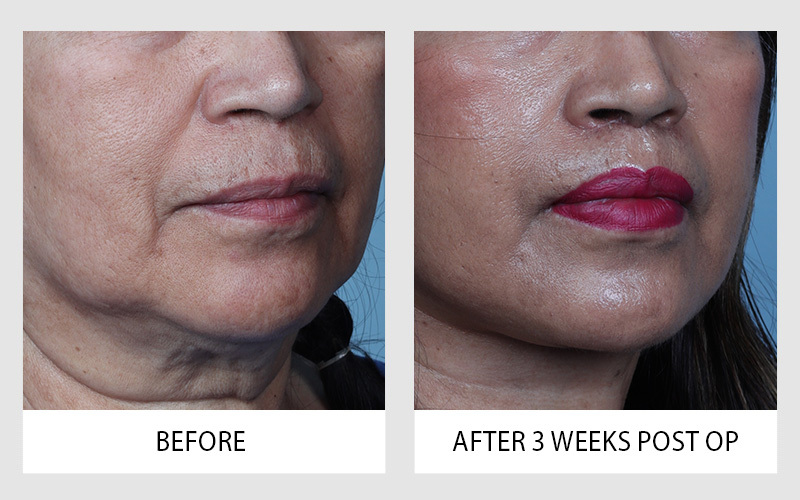
Benefits of a Lip Lift Procedure
Here are the benefits of a lip lift procedure and why it has become a sought-after choice for many.
Enhanced Lip Definition and Proportion
One of the primary benefits of a lip lift is the improvement in lip definition and proportion. By lifting the upper lip, the procedure creates a more prominent and well-defined lip line, enhancing the natural shape and contours of the lips. This results in a more balanced and aesthetically pleasing appearance, particularly for individuals with a long philtrum (the space between the nose and the upper lip).
Youthful and Rejuvenated Appearance
As we age, the distance between the nose and the upper lip tends to increase, leading to a less youthful appearance. A lip lift effectively addresses this issue by shortening the philtrum, restoring a more youthful and rejuvenated look. The procedure can also help reduce the appearance of fine lines and wrinkles around the mouth, contributing to an overall fresher and more vibrant appearance.
Permanent Results
Unlike temporary solutions such as lip fillers, a lip lift offers permanent results. Once the procedure is completed, the effects are long-lasting, providing individuals with a consistent and enduring enhancement. This makes a lip lift an attractive option for those seeking a lasting solution to achieve their desired lip aesthetics without needing ongoing maintenance.
Natural-Looking Outcomes
A well-executed lip lift provides natural-looking outcomes that enhance the individual’s facial features harmoniously. Many patients experience the so-called “duck lips” effect after repeated use of lip fillers, where the lips appear overly plump and unnatural. Unlike fillers, a lip lift focuses on reshaping and repositioning the lips rather than adding volume. This approach creates a more balanced, subtle enhancement that looks natural and aligns with the patient’s facial proportions. With a lip lift, individuals can achieve authentic and permanent results, avoiding the overfilled appearance that results from excessive filler use.
Boost in Self-Confidence
The positive impact of a lip lift extends beyond physical appearance. Many individuals who undergo the procedure report a boost in self-confidence and self-esteem. Feeling more satisfied with their appearance can lead to improved social interactions and a greater sense of well-being. The transformative effects of a lip lift can empower individuals to feel more comfortable and confident in their skin.
Showing Upper Teeth While Talking
One of the subtle yet impactful benefits of a lip lift is that it often results in the upper teeth becoming more visible when a person is speaking or smiling. This feature is generally considered more attractive and youthful, creating a lively and engaging appearance. Many individuals seek the lip lift procedure primarily to achieve this “upper teeth talker” look. However, it is important to note that the outcome can vary depending on the individual’s unique lip shape and anatomy. While achieving this result is not guaranteed for everyone, it remains an appealing aspect and potential byproduct of the lip lift procedure.
Choosing Between a Lip Lift and Lip Filler
When deciding between a lip lift and lip fillers, several crucial factors should guide your choice:
- Longevity: A lip lift provides permanent results, maintaining fullness indefinitely, whereas lip fillers typically last up to six months before requiring touch-ups.
- Recovery: Lip fillers involve minimal downtime, often considered a “lunchtime” procedure, while a lip lift entails a recovery period with potential swelling and bruising that resolves over a few weeks.
- Customization: Lip fillers offer adjustable enhancement, allowing for subtle or dramatic changes over time. In contrast, the results of a lip lift are more fixed and less adaptable.
- Maintenance: Fillers necessitate periodic touch-ups to sustain results, whereas lip lifts offer a one-time procedure for long-term enhancement.
- Aesthetic Goals: Preferences for natural-looking enhancements or gradual changes influence the choice between surgical and non-surgical options.
Considering these factors, consulting with a qualified cosmetic surgeon will help determine the best approach based on your desired outcomes, lifestyle, and aesthetic preferences.
Am I a candidate for a Lip Lift?
Before deciding to undergo a lip lift, it’s essential to identify the best candidates to ensure optimal results. Understanding the relevant physical traits, age considerations, and health requirements can help determine who will benefit most from this procedure. During the consultation, the plastic surgeon will thoroughly assess each client. A thorough pre-surgical evaluation, including blood tests, should be conducted. But here are some general considerations.
Upper Lip Length
Candidates with a longer philtrum (the area between the nose and the upper lip) may appear to have a downturned or aged mouth. An ideal distance between the nose and the upper lip is considered to be around 12-15 mm. A lip lift procedure may be considered to achieve balanced facial symmetry if the distance is longer.
Lip Shape and Fullness
Individuals with thin or poorly defined upper lips can achieve improved lip contour and fullness through a lip lift. A fuller appearance can also be achieved with fillers; however, the results are not permanent, and fillers require maintenance.
Lip Symmetry
Candidates with asymmetrical lips can benefit from a lip lift, which can help create a more balanced and harmonious facial appearance. Specifically, lip lifts are effective in correcting asymmetries where the cupid’s bow has height irregularities, meaning one side is higher than the other. By adjusting the position of the cupid’s bow, a lip lift can create a more symmetrical and aesthetically pleasing look.
Skin Elasticity
Good skin elasticity is crucial for better healing and aesthetic outcomes. Candidates with moderate to good skin elasticity tend to heal better and achieve more natural results.
Age
While there is no universally agreed-upon best age for a lip lift, the most common range is between 30 and 60 years. This range typically includes individuals seeking rejuvenation and those experiencing age-related changes in lip structure. Candidates over 60 can still undergo a lip lift if they have good skin elasticity and overall health, although individual assessment is crucial.
Health Requirements
Candidates should be in generally good health, free from any serious chronic conditions that could impair healing. Non-smokers are preferred, as smoking can significantly impede the healing process and increase the risk of complications. Additionally, candidates should not have bleeding disorders or be on blood-thinning medications, as these can complicate the surgical process.
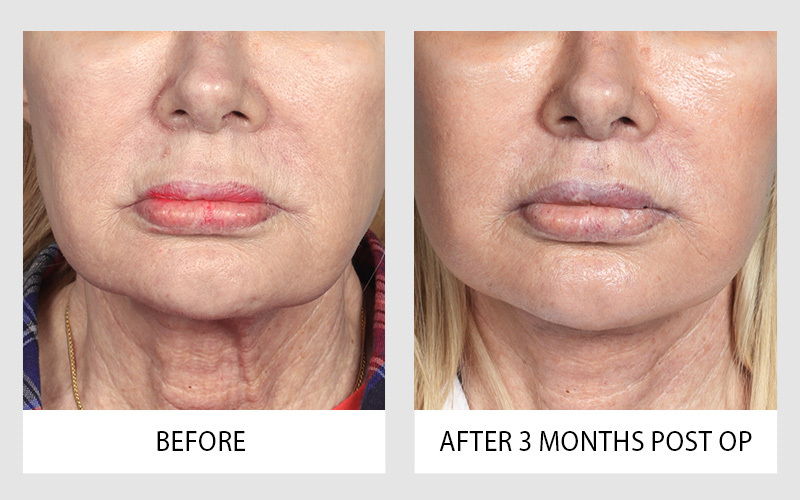
Recovery and Aftercare for a Lip Lift
The downtime after undergoing a lip lift procedure is typically around two weeks. During this recovery period, patients must follow specific aftercare guidelines to ensure minimal scarring and achieve the best possible results. Here is a detailed breakdown of what to expect and how to care for yourself after the surgery.
Immediate Post-Surgery Period (Day 1-3)
After undergoing a lip lift procedure, you will leave the office with a small, skin-colored bandage. It is not very noticeable. This bandage must be kept on for 24 hours to maintain a sterile environment and aid in the initial healing process. During this time, it is important to avoid washing your face or taking showers. This helps keep the bandage dry and intact.
Rest is crucial during the first few days post-surgery. Avoid rubbing or touching the surgical area to prevent irritation and potential infection. Expect some pain and discomfort, which can be managed with the medications prescribed by your doctor. It is important to avoid taking non-steroidal anti-inflammatory drugs (NSAIDs) such as Motrin, Advil, or ibuprofen, as these can thin the blood and increase bruising.
After the first day, you will likely notice some swelling, which is a normal part of the healing process. Applying an antibiotic ointment to the incision site as instructed by your surgeon will help prevent infection and promote healing. Swelling typically peaks around the third-day post-surgery and will gradually subside afterward.
To avoid straining the surgical site, stick to soft foods that require minimal chewing. Additionally, limit laughter and facial expressions that involve excessive mouth movement to prevent stress on the incision area.
After the First Week
After your lip lift procedure, you will visit your surgeon to have the sutures removed. By this time, about 80% of the swelling will have subsided, though some residual swelling may persist for a few more weeks. Bruising is also common during the first two weeks post-surgery. The final results of the procedure typically become noticeable around three months after surgery.
After the sutures are removed, the incision area may appear slightly raw. To aid in healing, continue applying the antibiotic ointment as instructed by your surgeon. About 12 days post-surgery, you can test the incision line with hydrogen peroxide. If it fizzes, continue using the ointment; if not, you can switch to a scar gel, which should be used for the first three months to minimize scarring.
Gently clean the incision area according to your surgeon’s instructions. Use a soft-bristled toothbrush to maintain oral hygiene and, if recommended, rinse your mouth with a mild antiseptic solution to prevent infection. Refrain from smoking and consuming alcohol, as these can impair the healing process and increase the risk of complications.
Avoid direct sunlight on the surgical site, as UV exposure can affect the healing process and lead to pigmentation changes. If you need to go outside, apply a lip balm with SPF to protect the area. Following these guidelines will help ensure proper healing and the best possible outcome from your lip lift procedure.
Long term aftercare
Typically, you can resume your daily routines, such as wearing makeup, about two weeks after your lip lift procedure. By this time, most of the swelling and bruising will have subsided, allowing you to return to normal activities. However, it is important to avoid strenuous exercise or activities that could strain your facial muscles until your surgeon gives you the green light.
At the end of the second week, while the majority of the swelling and bruising will have diminished, the incision may still be visible and have a pinkish hue. This coloration is a normal part of the healing process and may persist for a couple of months. The incision will continue to transform and heal over the course of the entire first year, so patience is key. While you can expect to be fully presentable after two weeks, the results will continue to improve, with significant progress visible by three months and the final results evident after a year.
To aid in the healing process and minimize scar visibility, use silicone-based scar treatments or gels as recommended by your surgeon. Keeping the area moisturized can also promote better scar formation. Be gentle with your lips and the surrounding area to avoid pulling, stretching, or applying excessive pressure. Continue to use mild skincare products and avoid harsh chemicals that could irritate the incision site.
Wait for at least a month before undergoing any dental work following a lip lift procedure. This precaution is essential because a lip lift involves surgical manipulation of the lips and surrounding tissues. Performing dental procedures too soon afterward could potentially disrupt the healing process and affect the final aesthetic results of the lip lift.
By following these long-term aftercare guidelines, you can ensure a smooth recovery. This will help you achieve the best possible outcome from your lip lift procedure.

Additional treatments for scarring
Any incision, whether on the face or elsewhere on the body, that penetrates deeply enough will inevitably leave a scar. However, advancements in medical and technological techniques, when administered by skilled professionals, can significantly minimize the visibility of scars. The healing qualities of the skin also play a crucial role in how scars form and fade over time.
In cases where an unfavorable scar develops after a procedure like a lip lift, several options are available to improve its appearance. These include laser resurfacing, which helps to smooth out scar tissue and promote skin regeneration. Microneedling can also be effective in reducing the appearance of scars by stimulating collagen production and enhancing skin texture. In cases where scar revision is necessary, a revision procedure may be recommended. This approach involves a less aggressive technique to correct the scar, which could include surgical excision, rearrangement of tissue, or other methods tailored to the specific scar characteristics. The goal is to achieve a more aesthetically pleasing outcome with minimal disruption to surrounding tissues.
FAQ
Is lip lift reversible?
No, the results of a lip lift are permanent and cannot be reversed. Unlike lip fillers, which can be dissolved if the results are unsatisfactory, a lip lift involves the removal of skin, making it a non-reversible procedure. Therefore, it’s important to choose a skilled and experienced surgeon to achieve the desired outcome.
Can a lip lift be combined with other facial procedures?
Yes, a lip lift can be combined with other facial procedures such as rhinoplasty, facelifts, or eyelid surgery. This combination achieves more comprehensive facial rejuvenation. Specifically, a lip lift can complement a facelift, which targets sagging skin and deep wrinkles on the lower face and neck. Including a lip lift with a facelift allows the surgeon to address multiple signs of aging in one surgery. This improves the contours of the lower face and neck and enhances the appearance of the lips and perioral region.
Are there any risks or complications associated with a lip lift?
As with any surgical procedure, there are risks and potential complications, including infection, scarring, asymmetry, and dissatisfaction with the results. Choosing a qualified and experienced surgeon can minimize these risks and ensure the best possible outcome.
What if I don’t like the result?
Unfortunately, the lip lift procedure is not reversible, so it’s crucial to understand the procedure thoroughly and set realistic expectations before undergoing it. During your consultation, be sure to ask all your questions and express any concerns you may have. Make sure you have a clear and open discussion with your surgeon about your aesthetic goals. Discuss what can realistically be achieved. Although the procedure cannot be undone, you can have a revision procedure after 3 months. This can address any dissatisfaction with the initial results.
Is a lip lift painful?
The lip lift procedure is typically performed under local anesthesia, which numbs the area and minimizes pain during the surgery. Most patients report feeling some pressure or mild discomfort during the procedure. After the surgery, it is common to experience some swelling, bruising, and mild pain, which can be managed with prescribed pain medications. Discomfort usually subsides within a few days, and most patients find the recovery period to be manageable. Always follow your surgeon’s post-operative care instructions to ensure a smooth and comfortable recovery.
Conclusion
The lip lift procedure offers a transformative solution for individuals seeking to enhance the appearance of their lips with lasting results. By shortening the distance between the nose and upper lip, this surgical technique creates a fuller and more defined lip shape and enhances overall facial symmetry. Smaller procedures, like a corner lip lift, elevate the outer corners of the lips, reducing a downturned appearance and enhancing the smile. When included in a comprehensive facial rejuvenation plan, these procedures can significantly improve overall facial harmony.
As the demand for aesthetic enhancements grows, particularly influenced by social media and beauty trends, the lip lift stands out. It is a reliable option for achieving natural-looking results that endure. This permanent solution offers a more youthful and aesthetically pleasing appearance. It provides individuals with a confidence boost and an enhanced sense of well-being.
Moreover, the lip lift procedure is relatively quick and straightforward, with most patients experiencing a smooth recovery and minimal downtime. With proper care, you’ll achieve permanent youthful lips in just two weeks, enjoying the long-term benefits without the need for frequent maintenance associated with temporary fillers.
Choosing a skilled and experienced surgeon is crucial to achieving the best possible results. A thorough consultation and clear communication with your surgeon will ensure that your aesthetic goals are met and that you have a realistic understanding of the outcomes. Whether as a standalone procedure or part of a broader facial rejuvenation plan, a lip lift can significantly enhance your appearance, contributing to a more harmonious and balanced facial profile.
Interested in Comprehensive Facial Rejuvenation?
If you enjoyed learning about lip lifts, you’ll find our detailed guide on Facelift Revision: When You Should Get One equally informative. Discover when it’s the right time for a facelift revision, what to expect, and how it can enhance your appearance. Don’t miss out on this essential read for anyone considering facial rejuvenation. Read the full article here: Facelift Revision: When You Should Get One.
